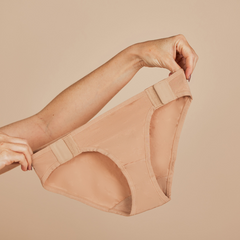
Engaging in physical and occupational therapy may seem like another one of the thousands of appointments you have to add to your schedule after your diagnosis with a disability, surgery, or stroke; however, it is one of the most important aspects of recovery.
Physical therapy focuses on restoring one’s ability to perform certain movements through reducing pain and increasing mobility. It is important as it focuses on the mobility of the area of your injury and serves as the basis for rehabilitation. For example, if you recently had shoulder surgery or suffered from a stroke, physical therapy is critical to avoiding chronic stiffness or partial paralysis.
Occupational therapy aims to help one reclaim their independence in doing day-to-day tasks. While not everyone requires occupational therapy, if you do, it can aid with everyday activities and return some level of normalcy.
Upon diagnosis, your doctor will most likely recommend one or both of these therapies and connect you with specialists to help you begin your journey towards regaining your life and mobility back. Despite all these benefits, physical and occupational therapy are notoriously both mentally and physically challenging. Not only is it a heavy time commitment, but overcoming mental blocks for certain movements or activities can be frustrating.
Tip 1: Before starting therapy, try to build a support group of family, friends, or others in your community to assist you throughout the process.Stopping physical therapy too early may do more harm than good. For example, Kathy (58), a special education teacher, went to physical therapy after tearing her rotator cuff, a common experience for thousands of women. Joking about her historically bad habit of being medically non-compliant, she did not keep up the exercises at home, which resulted in a frozen shoulder that causes shooting pain whenever she moves her arm.
Kathy’s experience is not unique and re-emphasizes the importance of making what you learn in physical and/or occupational therapy into habits rather than tasks on your to-do list. In this way, you receive long-term benefits from therapy rather than having to cycle in and out of pain and different therapies for longer than initially intended.
Tip 2: The decision of when to stop physical therapy should be worked out when you feel ready and your therapist says that you are.
However, what happens if what you are doing in physical therapy is not working?
Remember, that only you truly know your body. While your physical therapist is there to help you, it is up to you to listen to your body and communicate with them as to what is and is not working. Your relationship with your therapist should be one of mutual respect and while it may begin with generalized exercises, after a few appointments, your therapy should become progressively more personalized towards your needs.
Tip 3: Don’t be afraid to advocate for yourself if something isn’t working because waiting too long may make things worse instead of better.
Physical and occupational therapy are key aspects of recovery. They improve strength and mobility but perhaps most importantly, they build up your confidence. One injury or disability diagnosis does not have to be a permanent disruption in your life. These therapies aid in making sure that while something unexpected happened to your body, that thing does not prevent you from achieving what you want to do with your life.



